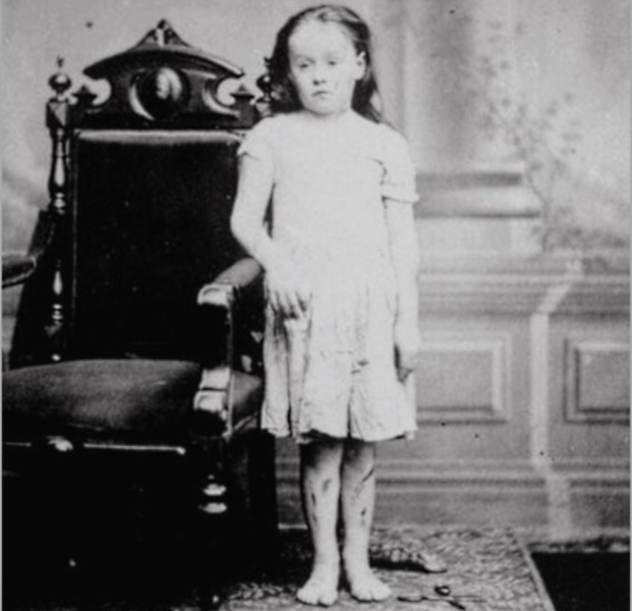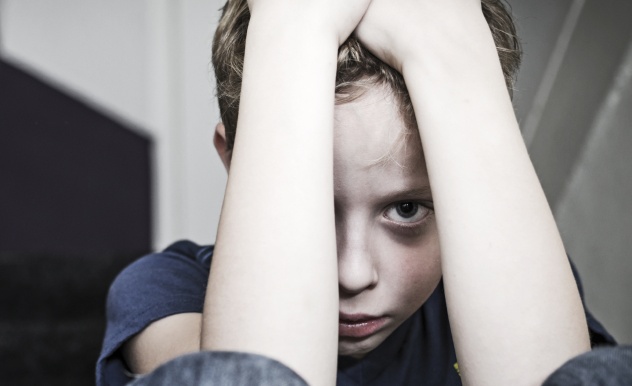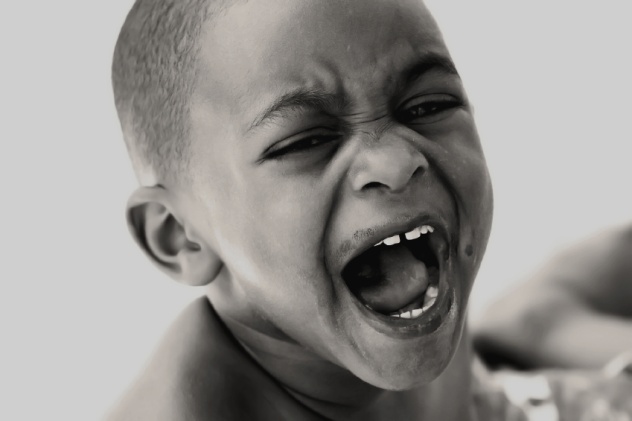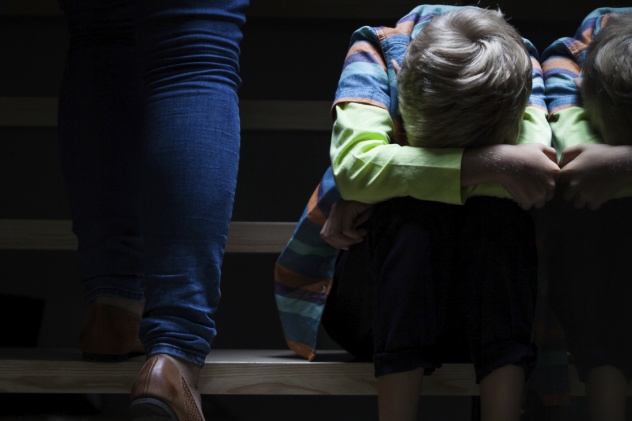 Technology
Technology  Technology
Technology  Humans
Humans 10 Everyday Human Behaviors That Are Actually Survival Instincts
 Animals
Animals 10 Animals That Humiliated and Harmed Historical Leaders
 History
History 10 Most Influential Protests in Modern History
 Creepy
Creepy 10 More Representations of Death from Myth, Legend, and Folktale
 Technology
Technology 10 Scientific Breakthroughs of 2025 That’ll Change Everything
 Our World
Our World 10 Ways Icelandic Culture Makes Other Countries Look Boring
 Misconceptions
Misconceptions 10 Common Misconceptions About the Victorian Era
 Mysteries
Mysteries 10 Strange Unexplained Mysteries of 2025
 Miscellaneous
Miscellaneous 10 of History’s Most Bell-Ringing Finishing Moves
 Technology
Technology Top 10 Everyday Tech Buzzwords That Hide a Darker Past
 Humans
Humans 10 Everyday Human Behaviors That Are Actually Survival Instincts
 Animals
Animals 10 Animals That Humiliated and Harmed Historical Leaders
Who's Behind Listverse?

Jamie Frater
Head Editor
Jamie founded Listverse due to an insatiable desire to share fascinating, obscure, and bizarre facts. He has been a guest speaker on numerous national radio and television stations and is a five time published author.
More About Us History
History 10 Most Influential Protests in Modern History
 Creepy
Creepy 10 More Representations of Death from Myth, Legend, and Folktale
 Technology
Technology 10 Scientific Breakthroughs of 2025 That’ll Change Everything
 Our World
Our World 10 Ways Icelandic Culture Makes Other Countries Look Boring
 Misconceptions
Misconceptions 10 Common Misconceptions About the Victorian Era
 Mysteries
Mysteries 10 Strange Unexplained Mysteries of 2025
 Miscellaneous
Miscellaneous 10 of History’s Most Bell-Ringing Finishing Moves
10 Appalling Crimes That Exposed Major Flaws In Child Protection
In a world rife with human horrors, child abuse is among the most abominable. Almost equally horrifying is when individuals and institutions enable child abuse through neglect, willful ignorance, or woefully inadequate safeguards. Such failings shake the conscience to its core and sometimes even catalyze change.
10 Mary Ellen’s Ordeal

Before 1875, legal remedies for the grotesque mistreatment of children were imposed inconsistently throughout the United States, and agencies devoted to child protection didn’t exist. That all started to change with the 1874 case of nine-year-old Mary Ellen Wilson.
Born in 1864, Mary Ellen became a ward of New York City’s Department of Charities after her father, Thomas Wilson, died, and her mother could no longer care for her. She ended up living with Thomas and Mary McCormack, whom the department illegally assigned as her caretakers. In a stroke of awful luck, Wilson’s adoptive father would also pass away, leaving Mary McCormack in charge. McCormack would remarry, adopt the surname Connolly, and relocate to a residence in Hell’s Kitchen. There, Mary Ellen’s suffering began.
Mary Ellen led an existence of bruises and abject deprivation. Connolly kept her socially isolated and scantly clothed. She lashed the child with a rawhide whip and attacked her with scissors. Mary Ellen’s screams were so blood-curdling that a distraught neighbor felt compelled to intervene.
That neighbor was missionary Etta Wheeler. Wheeler contacted police and child charities. Law enforcement, however, was loath to act, and the charities were devoid of any legal clout. So a frustrated Etta approached Henry Bergh, who had founded the American Society for the Prevention of Cruelty to Animals (ASPCA).
Bergh was deeply moved by Mary Ellen’s plight and went to bat for her in court. Aided by the testimony of neighbors and Mary Ellen herself, he convinced a judge to have Wilson placed under court supervision. Wheeler eventually adopted the girl. Connolly was sentenced to a year of prison labor.
Media coverage from the Wilson case jolted civic-minded people across the country into action. Henry Bergh went on to found the New York Society for the Prevention of Cruelty to Children (NYSPCC), which is recognized as world’s first child protection organization. A half-century later, there were about 300 similar institutions throughout the United States. The impact of the NYSPCC was also felt overseas, with the agency providing a blueprint for children’s rights advocates in the UK and Australia.
9 The Murder Of Little Elisa
Roughly 120 years after Mary Ellen Wilson’s shrieks horrified residents of Hell’s Kitchen, Manhattanites recoiled from the screams of another defenseless girl in dire straits. But unlike Wilson, six-year-old Elisa Izquierdo didn’t have a happy ending.
Elisa was born in 1989 with cocaine-tainted blood. Her mother, Awilda Lopez, had lost her apartment while nursing her drug habit in lieu of her two older children. Given these circumstances, a court granted sole custody of Elisa to her father, Gustavo Izquierdo. Gustavo was reportedly a fantastic and affectionate father. However, Awilda soon made her way into her daughter’s life. After completing drug rehab and finding a husband in Carlos Lopez, the recovering addict gained visitation rights.
Elisa regularly left her mother’s place with bruises. She came home needing to vomit and dreaded entering the bathroom. Somehow, this ghastliness didn’t convince a New York court that the girl was unsafe with her mother. Neither did the fact that Lopez’s husband had once stabbed Awilda with a pocketknife. Instead, Awilda was simply ordered not to strike her child.
Then, Elisa’s father died. Awilda got temporary custody. Teachers, relatives, and various social workers vociferously objected. Social services, however, rebuffed their complaints, citing a supposed lack of evidence. Reports from concerned neighbors, who heard Elisa begging not to be hurt, similarly went ignored. Eventually, Izquierdo’s mother withdrew her from school altogether. At home, she was confined to a single room and forced to relieve herself in a pot. The accumulation of undisposed waste seeped through the floor and into the apartment below.
The final straw broke in November 1995. After withstanding a torrent of burns, cuts, and strikes all over her body, Elisa stopped breathing. An uproarious public wanted to know why repeated warnings were ignored, but child welfare officials hid behind a shield of privacy laws.
Unsettled by the ease with which social workers could hide huge blunders, in 1996, New York ratified Elisa’s Law, which requires child welfare agencies to reveal when a person is charged with child abuse and report when a child dies under their watch. The legislation also did away with a requirement to destroy records of child abuse claims that, like in Elisa’s case, were deemed unsubstantiated.
8 The McColgan Abuse Nightmare

Ireland’s 1991 Child Care Act mandated that children’s well-being take top priority in abuse cases. Prior to that milestone, child protection agencies focused by and large on reforming unsafe parents with minimal police involvement. Consequently, countless children remained trapped in torturous households.
As applied sciences lecturer Dr. Harry Ferguson once pointed out, this detrimental emphasis on relatively hands-off parental reform resulted from an acutely underdeveloped knowledge of how best to address child mistreatment. Such catastrophic shortcomings would be brought to the forefront by cases such as that of siblings Sophia, Gerard, and Keith McColgan.
The abuse began at the McColgan’s County Sligo home. It was the late 1970s, a time when concerted child protection efforts were in their nascent stages. Standard protocols for handling “non-accidental injury” to children didn’t exist before 1977, and standards for dealing with child sexual abuse didn’t exist at all. It was in this legal environment that the children’s father, Joseph, began to subject them to a daily regimen of rape and severe beatings that lasted well into the early 1990s.
Over the course of the abuse, professionals from the North Western Health Board were assigned to the kids’ case. Despite pleas from school officials, field social workers, and the McColgan children themselves, board officials shirked their duties, failing to even report the abuses to proper authorities. In fact, according to Gerard McColgan, at one point, designated counselor Dr. Desmond Moran chastised him for being manipulative and threatened him with shock therapy.
By 1995, attitudes and efforts had changed, and Joseph McColgan was finally convicted for his unthinkable crimes and handed a mere 12-year sentence. In the aftermath, Joseph’s children sued North Western Health Board and Dr. Moran for unconscionable negligence. It was the first such case to come before an Irish court, and in 1998, it ended with an unprecedented settlement. A judge awarded the McColgan children £1 million.
7 The Horrors Of Kilkenny And Roscommon

Two years before Joseph McColgan’s incest conviction, residents of Kilkenny, Ireland, learned of a twisted father who preyed on his own daughter for more than a decade. From 1976 to 1991, the perpetrator, who remains unnamed for legal reasons, molested his child and produced a son with her. During that period, the mother deceived authorities about the abuse, and police dragged their feet looking into the victim’s claims. Such failings spurred the publication of a comprehensive analysis in 1993 that proved crucial in reforming Ireland’s child welfare mechanisms.
The Kilkenny case also had lasting legal ramifications. Because the father was charged with incest, he could only be incarcerated for a maximum of seven years in accordance with a 1908 law. Consequently, the man who wantonly raped his own daughter for 16 years got what many perceived as a slap on the wrist. Incensed legislators responded by increasing the maximum penalty for incest to 20 years in prison. In 1995, the law was toughened to permit life imprisonment.
Unfortunately, these changes only applied to male perpetrators. Women guilty of the same sin were still punished by the much lighter 1908 standard. This disparity reared its ugly head in 2009, during the Roscommon incest case.
It happened in moments of drunken perversion. On at least four occasions, a woman coerced her 14-year-old son into having sex with her. She also she beat him and his five siblings repeatedly and left them to languish in an unbearably filthy house. None of the children had even been toilet-trained. The mother pleaded guilty and received the seven-year maximum penalty for women. She only had to serve five. The children’s father, who denied guilt, was convicted for the same offenses. But as a man, he was hit with a 14-year prison term.
Legislators like Denis Naughten felt compelled to fix the disparity. In 2012, Naughten introduced a bill allowing life imprisonment for women convicted of sexually assaulting relatives. In 2014, it became law.
6 The Terrell Peterson Tragedy

On Thanksgiving 1996, little Terrell Peterson was rushed to the emergency room of a Georgia hospital. His aunt and assigned foster mother, Fran Peterson, had brutally battered him. Fran was arrested, but in an infuriating twist, the case against her was dismissed because the caseworker assigned to act on Terrell’s behalf didn’t show up for the hearing. It just was one of many times that an employee of Georgia’s Department of Family and Children Services would fail Terrell.
Despite clear signs of abuse, caseworkers seldom checked on Terrell, who would spend much of his short life tied to a banister. Fran force-fed him grits, barley, oatmeal, and toilet waste. He became so famished that he began to steal food and rummage through trash at school. Teachers and doctors implored social services to intervene, but no one did. Even when Fran Peterson purportedly seared the flesh off one of Terrell’s feet, no one from the department investigated.
In 1998, Terrell Peterson died. The emaciated five-year-old was a 13-kilogram (29 lb) collage of cuts, bruises, and cigarette burns. He’d sustained so many gruesome injuries that the coroner struggled to isolate a specific cause of death. Fran Peterson was convicted of murder.
Georgia’s Department of Family and Children Services insisted that its social workers had “immediately and comprehensively” strove to save Terrell, following proper procedure to the letter. It was the kind of shameless deception that the department could typically get away with due to privacy laws, which had allowed it to seal child abuse cases like Terrell’s. The stomach-turning reality wouldn’t come out for over a year.
Attorney Don Keenan uncovered the truth by having Terrell’s case unsealed. He subsequently sued the state of Georgia on the child’s behalf. News of the cover-up prompted raids and a criminal probe by Georgia’s Bureau of Investigation. The state also passed Terrell’s Law, which allows doctors to assume provisional guardianship of abused children at hospitals.
5 Denver’s DHS Debacles
Sadly, lack of caseworker accountability isn’t limited to Georgia. In 2007, Denver’s Department of Human Services (DHS) came under scrutiny for failing to prevent the highly publicized murders of seven-year-old Chandler Grafner and three-year-old Neveah Gallegos.
Chandler Grafner had been given to his mother’s ex-boyfriend, Jon Philips, after a court deemed his mother an unfit parent. Together with his girlfriend, Sarah Berry, Philips took to locking Chandler in a closet all day and making him relieve himself in a litter box. They eventually starved Chandler to death.
Denver’s DHS had every reason to believe that Chandler was in trouble. Four months before his passing, a teacher sounded the alarm, reporting frequent truancies and other red flags to a child abuse hotline. Officials at the DHS, however, did an abysmal job of following up and sharing information with authorities.
When the DHS took notice of Neveah Gallegos, her mother was dating a registered sex offender, Angel Montoya, who was suspected of molesting the toddler. No attempt was made to remove her from the home. A year later, Neveah’s case was dropped altogether because her mother, Miriam, wouldn’t play ball. Miriam would later try to mask her daughter’s death after Angel strangled the girl in 2007.
These tragedies prompted a two-year review of the Denver DHS and similar agencies throughout the state. The inquiry committee found a bevy of problems, including a lack of accountability, insufficient caseworker training, and the need for centralized oversight. It also proposed 34 potential fixes. Unfortunately, that knowledge didn’t necessarily translate into action.
In the years that followed, caseworkers continued to make devastating errors. They missed or outright dismissed reports of abuse, left police out of the loop, and didn’t properly watch over at-risk children. At least 18 delayed investigations ended in a child’s death.
In 2013, Colorado attempted to correct its deficiencies with a major overhaul of the state’s child welfare system, including greater caseworker support and increased funding for child protection.
4 The Victoria Climbie Case
Esteemed social worker and parliamentarian Lord William Laming called Victoria Climbie’s case a watershed moment. Jaw-dropping errors and missed opportunities led to the murder of an eight-year-old girl, sparking comprehensive reforms.
In the cruelest of ironies, Victoria’s ordeal started with a loving gesture. Originally from the Ivory Coast, she was sent to England in 1999 by her parents, who believed that the UK offered better educational opportunities. Victoria’s great-aunt, Marie Therese Kouao, and her boyfriend, Carl Manning, would serve as parental stand-ins. But instead of improving Climbie’s life, they mercilessly ended it.
Victoria’s time with Kouao and Manning was a frozen hell. Forced to live in an icy bathtub that was fitted with a bin liner and often filled with her own feces, she was the target of sickening assaults. Manning and Kouao struck her with objects such as a hammer, a bike chain, a wire, and a belt buckle. They burned her with cigarettes. After she passed away, examiners found 128 different injuries.
An inquiry into Climbie’s death pinpointed no fewer than 12 missed chances to save her. Climbie’s case had been reviewed by four separate social service agencies, and she made repeated visits to two different hospitals for severe burns and other horrific injuries. One of Marie Kouao’s in-laws even beseeched social services to rescue the girl.
But social workers sent to investigate abuse claims failed to interview crucial people in the case, including Victoria herself, before returning Climbie to her nightmare abode. Even after police took her into protective custody, social services sent her back. Britain’s National Society for the Prevention of Cruelty to Children came under fire for allegedly waiting seven months to notice warnings about Victoria.
UK lawmakers found the bounty of screw-ups unacceptable. In an attempt to bolster child protection efforts, the government established trusts to manage child abuse cases on a local level and set new childcare protocols for healthcare professionals to follow. The efficacy of such reforms, however, has been called into question.
3 Oxfordshire’s Grooming Gang
Child predators rely on a toxic inventory of psychological ploys to coax minors into sexual activity. In a process known as “grooming,” offenders often gain the affection and trust of a child with seemingly kind gestures while gradually blurring the lines between platonic and prurient behavior. Detecting these signs is vital in stopping abuse before it starts, while failing to do so condemns kids to horrendous mistreatment. Residents of Oxfordshire learned that lesson the hard way.
The revelation hit like an oversize sledgehammer. Between 2004 and 2012, over 300 girls and approximately 50 boys were used as the carnal playthings of fiends. A collective of roving pedophiles offered them alcohol and illicit drugs in exchange for their compliance, honing in on the most vulnerable youngsters. Some of the girls targeted were as young as 11. Among them was a 12-year-old forced to undergo an illegal abortion to hide the evidence of the crimes.
A number of the victims believed that they were in consenting relationships with their abusers and, depressingly, Oxfordshire authorities agreed with them. In a textbook example of victim-blaming, police and local council officials waved off unwholesome trysts between adults and their mostly female victims as instances of “troublesome” and “precocious” females engaging in deviant behavior. Policemen went so far as to sneer that these children were “prostituting” and “deliberately” imperiling themselves. Pedophiles sometimes picked up children right outside the county’s social services building, and seemingly no one batted an eye.
A report into the government’s myriad screw-ups lambasted a system all too eager to turn its back on troubled children. Oxfordshire authorities sought to rectify their wrongs with a series of initiatives. In 2012, the Oxfordshire County Council launched the Kingfisher Team, a multipronged organization dedicated to detecting child sexual abuse. The government also amped up efforts to crack down on child predators, increased funding for child protection services, updated training regimes for child welfare officials, and attempted to boost overall public awareness of child abuse.
2 The Rotherham Rape Epidemic
To ensure justice for both children and accused child abusers, assertions of criminal wrongdoing must be assessed with a skeptical eye. But sometimes, authorities take this too far. Victims of notorious pedophile Jimmy Savile, for example, were often mocked or summarily disregarded when they tried to come forward. Children preyed on by vulturine clergymen have historically faced blind incredulity when speaking out. And in Rotherham, England, some 1,400 children endured years of unutterable agony because police and council officials refused to acknowledge the severity of their predicament.
Between 1997 and 2013, gangs of primarily “Asian” pedophiles raped and brutalized children as young as 11, sometimes selling them into sexual slavery. To force their compliance, the brutes used such cold-blooded intimidation tactics as holding their victims at gunpoint or drenching them in gasoline and threatening to set them ablaze. According to one Rotherham survivor, gang rape was rampant.
A cocktail of skepticism, passivity, and politics helped to fuel the abuse for 16 years. Professionals who sought to shed light on the crimes in the early 2000s faced stifling opposition from upper management. Their findings were perceived as drastically overblown. The ethnicity of the offenders made officials fearful that pursuing the case more vigorously would stoke bigoted sentiments in the general public. And even after law enforcement started cracking down on members of Rotherham’s pedophilic underbelly in 2010, prosecutions remained limited.
In 2015, UK Home Office Secretary Theresa May repudiated Rotherham’s “culture of denial” and announced plans to remedy it. According to one measure, public employees such as teachers or politicians who neglect to report probable child abuse will face up to five years’ imprisonment. Also in the works were a task force to help authorities track down child predators, a centralized resource for whistle-blowers, and a £1 million public awareness initiative.
1 Victoria’s Residential Care Scandal

The problem came to light in an appallingly dark way. In 2011, Australia’s Department of Human Services (DHS) sought to rescue a brother-sister duo from their violent mother by assigning them to a state-run facility in Victoria. But rather than finding a safe haven there, the children were marooned in a sexual predator’s paradise. Older children forced themselves on the siblings multiple times. The girl experienced so much physical and psychological trauma that she tried to kill herself. Her brother was repeatedly raped and sometimes escorted by an older girl to a place where adults paid her for sex. DHS officials, however, had declined to disclose these offenses and later sought to cover their tracks in related court proceedings.
That scandal was only the tip of the iceberg. Subsequent investigations showed that chronic understaffing, subpar employee training, and an excess of residents made Victoria’s childcare facilities easy targets for child molesters. Creepy adults came bearing booze, tobacco, and narcotics to share with impressionable youngsters, some of whom had already grown accustomed to sexual abuse at their former homes.
Overwhelmed and under-skilled staff responded to these conditions deplorably. They avoided alerting law enforcement about the assaults taking place on and off residential grounds, allowed sexually aggressive children to live with their victims, and left rape cases in limbo for months. Abusers who lived at the facility were neither castigated nor counseled. Victims who sought support were often left to their own devices.
Even efforts to evaluate the DHS were bogged down by mistakes. Of the 591 cases of sexual abuse that should have been submitted for review by the Commission for Children and Young People, the department failed to turn over 402 of them. In light of such shocking disarray, the Australian government sought additional hires to relieve the DHS’s overtaxed workforce and watch over children at residential facilities. The Commission for Children and Young People, which conducted the scandalous review of the DHS’s failures, pressed for absolute reform of a badly fractured system. Whatever the recourse, something needs to change.








